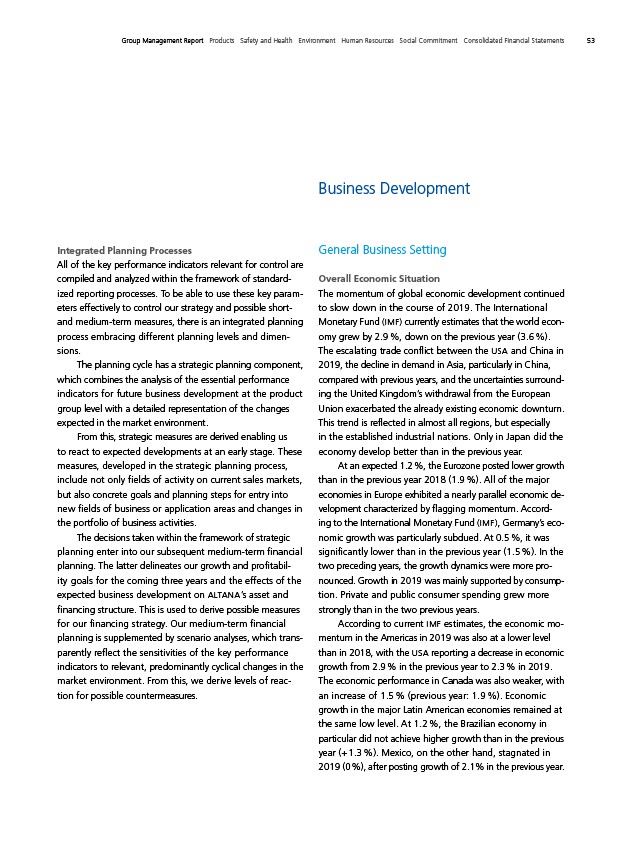
Group Management Report Products Safety and Health Environment Human Resources Social Commitment Consolidated Financial Statements 53
Integrated Planning Processes
All of the key performance indicators relevant for control are
compiled and analyzed within the framework of standardized
reporting processes. To be able to use these key parameters
effectively to control our strategy and possible short-
and medium-term measures, there is an integrated planning
process embracing different planning levels and dimensions.
The planning cycle has a strategic planning component,
which combines the analysis of the essential performance
indicators for future business development at the product
group level with a detailed representation of the changes
expected in the market environment.
From this, strategic measures are derived enabling us
to react to expected developments at an early stage. These
measures, developed in the strategic planning process,
include not only fields of activity on current sales markets,
but also concrete goals and planning steps for entry into
new fields of business or application areas and changes in
the portfolio of business activities.
The decisions taken within the framework of strategic
planning enter into our subsequent medium-term financial
planning. The latter delineates our growth and profitabil-
ity goals for the coming three years and the effects of the
expected business development on ALTANA’s asset and
financing structure. This is used to derive possible measures
for our financing strategy. Our medium-term financial
planning is supplemented by scenario analyses, which transparently
reflect the sensitivities of the key performance
indicators to relevant, predominantly cyclical changes in the
market environment. From this, we derive levels of reaction
for possible countermeasures.
Business Development
General Business Setting
Overall Economic Situation
The momentum of global economic development continued
to slow down in the course of 2019. The International
Monetary Fund (IMF) currently estimates that the world economy
grew by 2.9 %, down on the previous year (3.6 %).
The escalating trade conflict between the USA and China in
2019, the decline in demand in Asia, particularly in China,
compared with previous years, and the uncertainties surrounding
the United Kingdom’s withdrawal from the European
Union exacerbated the already existing economic downturn.
This trend is reflected in almost all regions, but especially
in the established industrial nations. Only in Japan did the
economy develop better than in the previous year.
At an expected 1.2 %, the Eurozone posted lower growth
than in the previous year 2018 (1.9 %). All of the major
economies in Europe exhibited a nearly parallel economic development
characterized by flagging momentum. Accord-
ing to the International Monetary Fund (IMF), Germany’s economic
growth was particularly subdued. At 0.5 %, it was
significantly lower than in the previous year (1.5 %). In the
two preceding years, the growth dynamics were more pronounced.
Growth in 2019 was mainly supported by consumption.
Private and public consumer spending grew more
strongly than in the two previous years.
According to current IMF estimates, the economic momentum
in the Americas in 2019 was also at a lower level
than in 2018, with the USA reporting a decrease in economic
growth from 2.9 % in the previous year to 2.3 % in 2019.
The economic performance in Canada was also weaker, with
an increase of 1.5 % (previous year: 1.9 %). Economic
growth in the major Latin American economies remained at
the same low level. At 1.2 %, the Brazilian economy in
particular did not achieve higher growth than in the previous
year (+ 1.3 %). Mexico, on the other hand, stagnated in
2019 (0 %), after posting growth of 2.1% in the previous year.